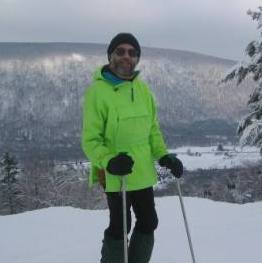
Wojtek Skulski's home page

![]()
My resume is posted online:
my resume.
Dark Matter. Nobody knows, what it is. But we do know that there is much more of this invisible stuff in the Universe, that the ordinary barionic matter which we see all around us. We are pretty sure that our own Galaxy would never had existed if the Dark Matter did not hold it together. Therefore, in my spare time I am trying to help find most of the Universe, which seems to be missing from the inventory. The following two presentations summarize the LUX trigger hardware and LUX trigger software, which I was helping to develop over the last few years.
The Universe and the FPGA (Digital Pulse Processing for Dark Matter Search), and
LUX Trigger Control Software.
Adaptive optics for petawatt lasers.
Creation of ultra-short petawatt laser pulses requires that we position hundred-pound pieces of glass to nanometer precision in order to coherently superpose light from disjoint optics pieces. The following presentation provides a history of these developments:
Development of Coherent Wavefront Addition at LLE.
The initial results of this work were published in
LLE Review.
The PDF version of the article is available online:
Demonstration of Real-Time, Phase-Locked Alignment of Tiled Gratings for Chirped-Pulse—Amplified Lasers.
(Note: the first page of the on-line PDF is blank.)
Latter results were published in Optics Letters 31, p.1561 (2006):
J.Bunkenburg, T.J.Kessler, W.Skulski, H.Huang,
Phase-locked control of tiled-grating assemblies for chirped-pulse-amplified lasers using a Mach-Zehnder interferometer.
Scientific programming without a sting. Have you ever wondered why programs are crashing?
Does it have to be so? It does not. A few years ago I developed sophisticated adaptive optics software
at the Laboratory for Laser Energetics (
LLE). During a year of intense development this software
did not crash even once. How was this possible? Find out from my lecture
Scientific Programming Without a Sting:
PowerPoint,
zipped PowerPoint, or
PDF.
I learned programming from the books by the Grand Master Professor Niklaus Wirth.
I feel greatly honored by the fact that a
presentation of my programming
followed his lecture during a recent
Oberon Day at CERN.
Getting started in modern electronics design. Would you like to design a printed circuit board of your own? Find out how from my lecture Getting Started in High Performance Electronic Design:
PowerPoint,
zipped PowerPoint, or
PDF.
Design art. Designing a printed circuit board can be fun, and it can lead to remarkably
beautiful pictures. Please download and enjoy a few examples of my Electronic Design Art:
Image 1,
2,
3.
I am looking forward to both me and you actually using this electronics!
My electronics. I learned electronic design "on the job".
I started with a programmable Time Equalizer now used by the
PHOBOS Collaboration at Brookhaven National Laboratory.
Then I built several versions of Digital Pulse Processors that convert signals into digital samples and process the numbers in the Field Programmable Gate Arrays (FPGA). Both the electronics and the motivation to build the units are explained in my presentation
From Picoseconds to Galaxies:
PowerPoint or
PDF.
Student projects. Students used my Pulse Processors in their work.
One student won the Stoddard Prize for the Best Senior Thesis in our department. Her
thesis
shows investigative work that a senior student can perform with the state-of-the-art research instrumentation.
The investigation was continued by another student during his summer
Research Experience for Undergraduates (REU) that concluded with a superb
report and
REU presentation.
Download my software. The BlackBox/Gr Toolbox and Persistent Object Manager (POM) for BlackBox are
available for download.